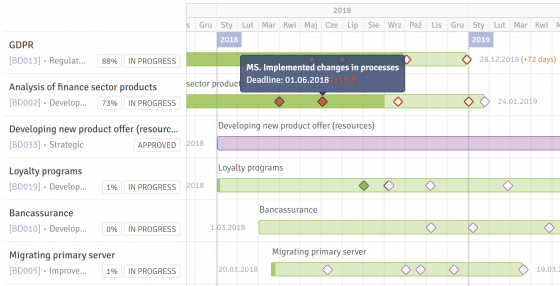
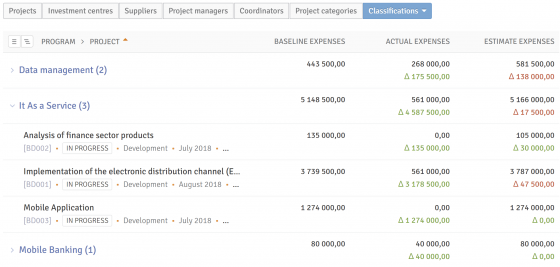
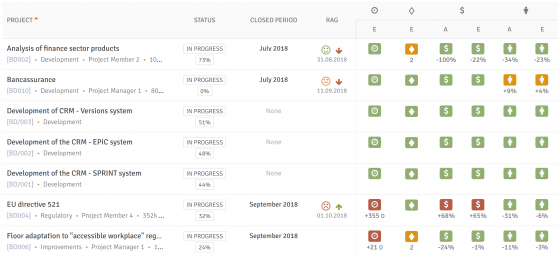
Project portfolio
Select the best and feasible projects. Consider financial and resource constraints and project dependencies. Maximize your return on investment.
Verify the status of projects and deviations from baselines (deadlines, budgets, resources) on an ongoing basis. Identify risks and react in advance.
Predict the use of project funds over time (years, quarters, months). Verify the impact of projects on the strategy. Visualize the value of projects and the risk of their implementation.
Projects
Develop project assumptions and define expected benefits. Build high performing team. Plan a schedule, budget and resources. Assess the value of the project for the organization taking into account the expenses and effects.
Coordinate the work. Update the schedule. Forecast expenses and resource use. Identify risks. Periodically report on the progress and finally summarize the project implementation. Evaluate the project results and close the project.
Get real-time access to project status and baseline deviations (deadlines, budget, resources). Verify relevant reports. Assess risks and react in advance. Change the baseline of a project under control, with a complete history of changes. Track the impact of decisions made on changes to the project baseline.
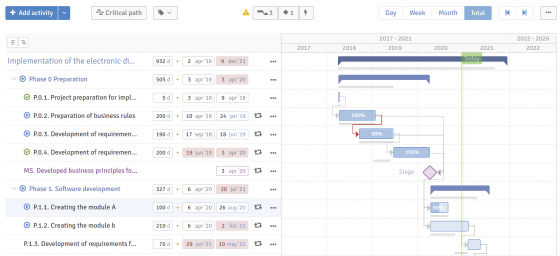
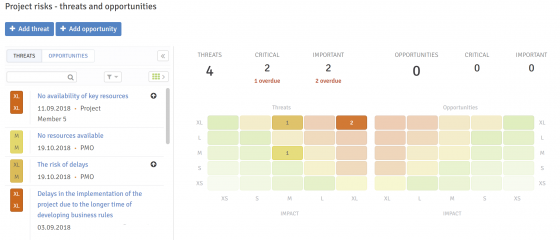
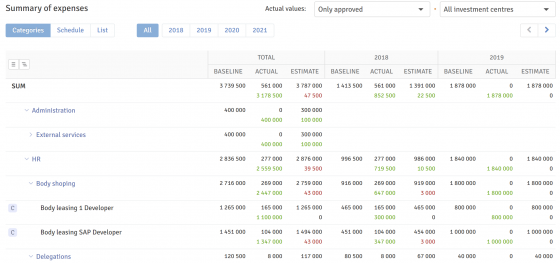

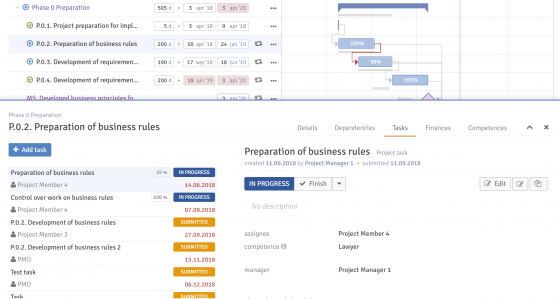

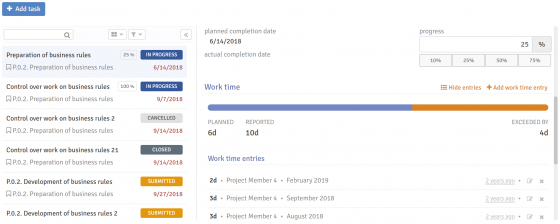
Project tasks
Create tasks in relation to the project schedule. Report tasks progress. Verify the results. Enable effective communication between the task manager and the task assignee.
Plan and report time spent on tasks with ease. Analyze actual time spent on tasks to improve planning and team productivity.
Synchronize issues performed by your team in JIRA with the project schedule. Detect the impact of delays in the implementation of JIRA issues. Ensure efficient collaboration and document sharing in the project using MS Teams
Budget
Plan the budget for the company project portfolio, broken down into business areas, CAPEX and OPEX, and individual years.
Verify the use of the budget for the company project portfolio implementation, broken down into business areas, CAPEX and OPEX, and individual years.
Make informed decisions based on real-time access to project portfolio budget utilisation and forecasts.
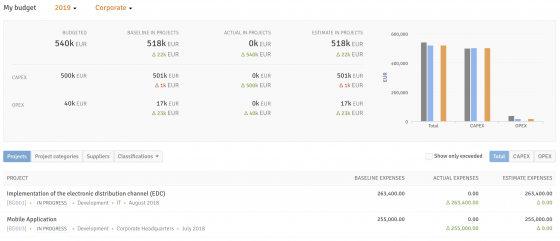
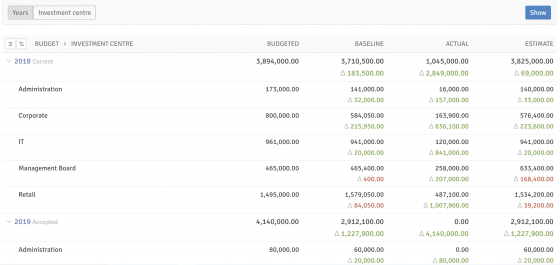

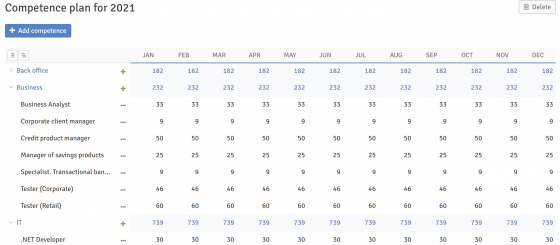
Competences
Plan the resources required to implement the company project portfolio, broken down into competence centers and competences, as well as individual months and years.
Identify overloaded competences and those that are not fully allocated, broken down by months and years.
Make informed decisions on competence development over time, based on information on the demand for competences resulting from planned and implemented projects.
Strategy
Identify strategic goals. Group strategic goals into perspectives. Create relationships between strategic goals. Visualize the strategy of Your organization.
Verify to what extent the organization's strategy is supported by implemented projects. Visualize support for strategic goals by individual projects.
Focus the development of the company project portfolio towards achieving specific strategic goals.
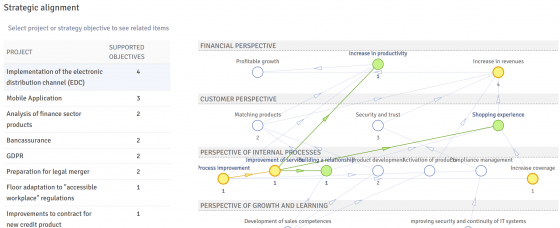
Benefits for successful PMO managers
Increased credibility and timeliness of projects' statuses
Reduced time spent on project portfolio planning & monitoring
Less unexpected delays in projects
Less unexpected budget overruns
Delivering more valuable projects
Increased post-project benefits
Request a demo
We will find the best solution for you
See also our other product
HadroneTM SPM
All services & costs. Visualised
Best-in-class service
catalog & cost management
Hadrone SPM enables modeling and visualization of the catalog and costs of services provided to internal and external customers, and then monitoring of actual costs and deviation tracking.
More




